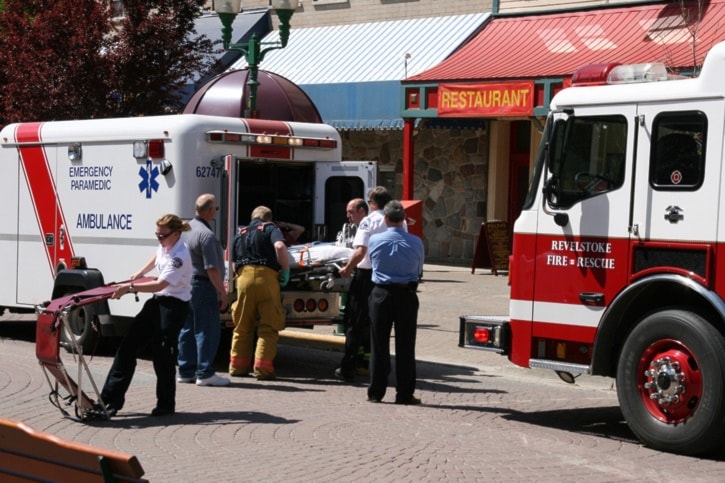Revelstoke city council is scheduled to evaluate options for the Revelstoke Fire Rescue Services’ First Responder Program at their Jan 11 regular meeting.
A report prepared by Fire Chief Rob Girard explores options for the program, which sees firefighters respond to medical calls to provide initial medical service.
The program, which has been operating for about 14 months, is much busier than anticipated when it was originally proposed. Girard originally anticipated about 40–50 calls annually. In fact, the department has averaged about 16 calls per month, or about 192 annually.
At a cost of about $115 per call, the program averages out to a cost of $23,587, explains Girard in his report. Girard says that an upcoming change in the dispatching system will reduce costs, and estimates annual costs will be reduced to $15,098.
The program is staffed by volunteer and career firefighters. The career firefighters receive overtime pay when they are on call for the program and are also actually called out.
Girard’s report highlights over 70 different incidents the department responded to.
Many are routine, such as helping paramedics lift heavy patients, or secure slip-and-fall victims to immobilizing stretchers.
Girard also outlines more serious incidents, ones where the program “made a significant critical contribution to patient care and potentially saving a life.” For example, on Jan. 14, 2010 the first responders assisted a patient at the Revelstoke Airport who had been seriously injured in a logging accident and flown to the airport. Both BCAS ambulances were not in Revelstoke, and responders had to wait for an ambulance to arrive from Sicamous to take the patient to Queen Victoria Hospital.
Other incidents include assisting people in anaphylactic shock, assisting young children who were choking, resuscitating a woman electrocuted on a worksite, assisting people with drug overdoses, several cardiac incidents, and several other serious falls involving elderly patients.
The report also sheds light on several periods where ambulance coverage in Revelstoke was diminished due staff shortages and other staffing issues. For example, for most of February, March and April of 2010 there was only one ambulance available in Revelstoke. Girard’s report says this contributed to more calls and more costs to the program than originally anticipated.
The fire chief’s report seeks permanent direction from council for the program, and recommends keeping it in place. He presents several options for council. His first recommendations is to keep the program as is, but seek ways to reduce costs.
Other recommendations include cancelling the program, or basing the program on the expected ambulance delay time. The latter would see the first responder program kick in when ambulances are delayed by 10 to 25 minutes. Another similar option would see the program kick in when the ambulance is delayed by 25 minutes or more.
